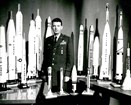The Minuteman missile was a direct result of the Cold War nuclear arms race. Powerful, accurate, reliable, and capable of being economically mass produced, the solid-fueled Minuteman missile was the Nation's first truly effective nuclear deterrent system. For three decades, a 1000 missile force remained on continuous alert—forming the backbone of the American nuclear arsenal, and serving as an important instrument of American diplomacy.
-
Minuteman Missile National Historic Site
Article 1: The Shock of Sputnik

On October 4, 1957, the Soviet Union successfully launched into orbit the world's first artificial satellite, Sputnik. Ham radio operators in the eastern United States turned their dials to lower frequency bands and anxiously listened as the 184-pound Sputnik emitted a mechanical " . . . beep . . . beep . . . beep . . . " while passing overhead. Read more
-
Minuteman Missile National Historic Site
Article 2: Origins of the Nuclear Arms Race
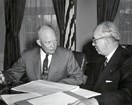
"We will not be aggressors," he said, "but we ... have and will maintain a massive capability to strike back." Eisenhower's comments reflected the doctrinal basis behind much of America's strategic planning during the Cold War era. Read more
-
Minuteman Missile National Historic Site
Article 3: The American ICBM Program
American military planners began developing ballistic missiles immediately after World War II. But by the late 1940s, America's missile program began to languish, largely because the Nation's nuclear superiority seemed secure. Following the Soviet's successful H-bomb test, two independent US organizations reevaluated the strategic importance of ICBMs to national security. Read more
-
Minuteman Missile National Historic Site
Article 4: First Generation ICBMs: Atlas and Titan
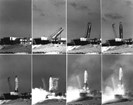
The Atlas was essentially a highly evolved version of the German V-2 missile, which Germany had used against the Allies during the waning years of World War II. In October 1955, the Air Force contracted with the Glenn L. Martin Company to produce a new ICBM called the Titan. Read more
-
Minuteman Missile National Historic Site
Article 5: Strength in Numbers: "The Missile Gap"

In October 1957, when the Soviet Union announced it had used a liquid-fueled ICBM to launch Sputnik into orbit, American scientists and politicians feared a significant "missile gap." Within months, journalists and intelligence analysts began asserting that the Soviet missile force could outnumber the American arsenal by as much as 16 to one by 1960. Read more
-
Minuteman Missile National Historic Site
Article 6: Weapon System "Q"
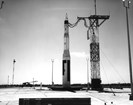
Colonel Edward Hall and his staff of engineers diligently researched their solid-fuel missile program. The new missile, initially dubbed "Weapon System Q," was the first strategic weapon capable of true mass production. Read more
-
Minuteman Missile National Historic Site
Article 7: Developing the Minuteman I
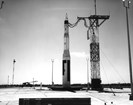
By the end of March 1958, at least seven or the Nation's foremost aircraft manufacturers, including the Boeing Airplane Company, were competing to build the new missile. During the next few months, the rest of the Minuteman missile team came into place. Much of the development work for Minuteman took place in northern Utah. Following two aborted launch attempts, the Air Force successfully fired the first Minuteman missile at 11:00 a. m. on February 1, 1961. Read more
-
Minuteman Missile National Historic Site
Article 8: The "Underground" Air Force

The Air Force took a major step toward achieving its ideal basing system in 1960 with the development of Titan II, which used storable liquid propellants. The Air Force could store Titan II missiles with fully-loaded propellant tanks, and fire them directly from underground silos. Nonetheless, Titan II missiles still needed constant attention from an on-site crew. Read more
-
Minuteman Missile National Historic Site
Article 9: Minuteman Missile Deployment and Site Selection
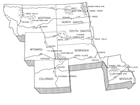
The Air Force organized the Minuteman force into a series of administrative units called "wings," each comprised of three or four 50-missile squadrons. Each squadron was further subdivided into five smaller units, called "flights." A flight consisted of a single, manned, launch control facility, linked to ten, unmanned, underground, missile silos. The silos were separated from the launch control facility and from each other by a distance of several miles. Read more
-
Minuteman Missile National Historic Site
Article 10: Minuteman Comes to Ellsworth Air Force Base
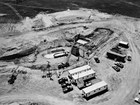
Military strategists began planning for a second Minuteman installation shortly after work got underway at Malmstrom AFB. In June 1960, the Air Force was authorized to add another 150 missiles to the Minuteman force. By early October, military strategists had narrowed their search for a new site to three locations in North and South Dakota. On January 5, 1961, US Senator Francis Case of South Dakota announced that Ellsworth AFB would be the second missile field. Read more
-
Minuteman Missile National Historic Site
Article 11: A Silo A Day

On September 11, 1961, the groundbreaking ceremony for Ellsworth AFB's Minuteman installations took place at Site L-6 near Bear Butte. The festivities started with a bang. While the Sturgis High School band played, representatives from Boeing, Kiewit, the Corps of Engineers, and Ellsworth AFB set off an explosive charge to begin the excavation. Read more
-
Minuteman Missile National Historic Site
Article 12: Backbone of the US Nuclear Arsenal
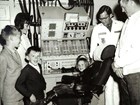
While the Ellsworth AFB sites were under construction, the Air Force was building several other Minuteman installations. By the end of 1967, the Nation had 1,000 Minuteman missiles on alert in six separate deployment areas located throughout the north-central United States. Read more
-
Minuteman Missile National Historic Site
Article 13: The Next Generations: Minuteman II and III
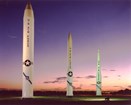
By the time planning began for the final Minuteman deployment area, the Air Force had developed a vastly improved version of the missile. Called Minuteman II, the new missile offered improved range, greater payload, more flexible targeting, and greater accuracy, leading one Air Force spokesperson to estimate that its "kill capacity" was eight times that of Minuteman I. Read more
-
Minuteman Missile National Historic Site
Article 14: Deactivation of the Minuteman II Weapon System
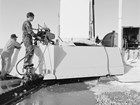
On September 27, 1991, President Bush announced on national television his "plan for peace." As part of the plan, Bush called for "the withdrawal from alert, within 72 hours," of all 450 Minuteman II missiles, including those at Ellsworth AFB. Read more

